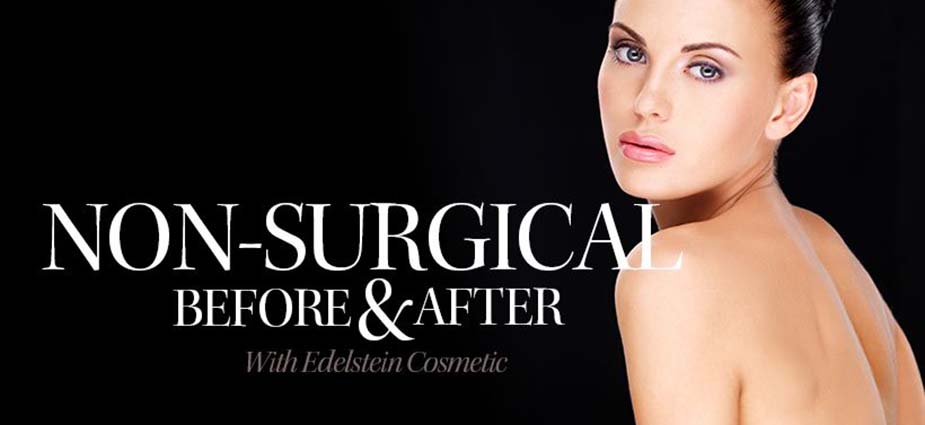PROBLEMS COMMONLY ASSOCIATED WITH MASSIVE WEIGHT LOSSCosmetic surgeons have seen a significant increase in patients who seek treatment for problems related to a history of massive weight loss (MWL). Individuals who have lost extremely large amounts of weight, while healthier, are often left with conditions like loose, hanging skin envelopes and unsightly protrusions. These issues can develop anywhere on the body and often lead to reduced self-esteem or embarrassment.
The rate of patients requiring solutions to these problems is linked to the rise of obesity over the last decade, a development that the World Health Organization deems a “global epidemic.” Fortunately, methods for controlling weight have also risen alongside this increase in obesity. Aside from the benefits of health awareness, solutions like bariatric surgery have helped individuals to safely and reliably lose large amounts of body mass. However, after returning to a proper body mass index (BMI) range, these individuals require aesthetic procedures to address contour deformities.CONTOUR DEFORMITIES AFTER MASSIVE WEIGHT LOSSShedding 50% or more excess weight is defined as massive weight loss and is often accompanied by contour deformities that can affect any area of the body such as:
poor skin tone
excess skin and soft tissue
a “deflated” appearance that is most noticeable in the face, breasts, arms, midsection and buttocks
stretch marks
cellulite (particularly in women)
pain and skin irritation stemming from the area below excess tissue folds
Many of these issues are caused by redundant skin and soft tissue that does not properly retract in compensation for lost weight, resulting in back or side “rolls”, sagging breasts, excess underarm skin or hanging skin/fat (pannus) that can fall as low as the inner thighs. It may also affect the thighs after extra tissue from the lower abdomen, pubic and buttocks region has collapsed.THE PITTSBURGH RATING SCALEThe Pittsburgh Rating Scale has been developed in order to best assess and quantify MWL-related problems. The scale works by measuring the level of deformity in ten different areas of the body (arms, breasts, abdomen, flanks, mons, back, buttocks, medial thigh, hips/lateral thighs and lower thighs/knees) with a four point grading system. The grading scale runs from normal range (grade zero) to mild (grade one), moderate (grade two) and severe deformity (grade three).
Using this scale, plastic surgeons can determine which level of correction is most appropriate for an individual patient. Severe deformities often require combination lift/excision surgeries while mild issues can be treated through minimally invasive procedures. The Pittsburgh Rating Scale allows for greater surgical predictability and is a valuable tool for preoperative patient assessment.BEFORE BODY CONTOURING FOLLOWING MASSIVE WEIGHT LOSSDue to the considerable extent and significant risks involved with MWL body contouring surgery, your board certified plastic surgeon performs a comprehensive physical examination before conducting any procedure at Edelstein Cosmetic. This evaluation focuses on several areas of the patient’s medical history, covering diet, exercise, lingering health conditions, prior weight loss, a discussion of any past bariatric procedures, the performance of laboratory studies and a physical check-up.
Your surgoen must also check that every surgical candidate has maintained a stable weight (gaining or losing no more than 1-2 pounds/month) for three to six months before the body contouring appointment. Once bariatric surgery has been performed, individuals typically settle into a regulated weight within a period of 18 to 24 months. If surgery is performed before a patient’s weight has fully stabilized, factors such as continued weight loss can lead to recurring skin laxity.
A senior anaesthesiologist with experience in preparing MWL patients for surgery will perform a check-up before the procedure. Your surgeon will discuss any concerns and procedural expectations during the consultation as well.SPECIAL NOTE ON SCARRINGDr. Edelstein talks about how he reduces scarringRegardless of the level of skin tightening accomplished through the procedure, MWL patients should expect tissue relaxation over time. A side effect of this process involves some contour definition loss and scar migration.
Your surgeon carefully marks all incision points in order to hide post-surgical scars as best as possible. As a part of this, he assesses any previous scars, plans the marks that any follow-up procedures may create and predicts the effects of future skin relaxation. Your surgeon will also discuss the degree, location and length of scarring with patients during the consultation process in order to help them form realistic expectations regarding their eventual appearance.



























